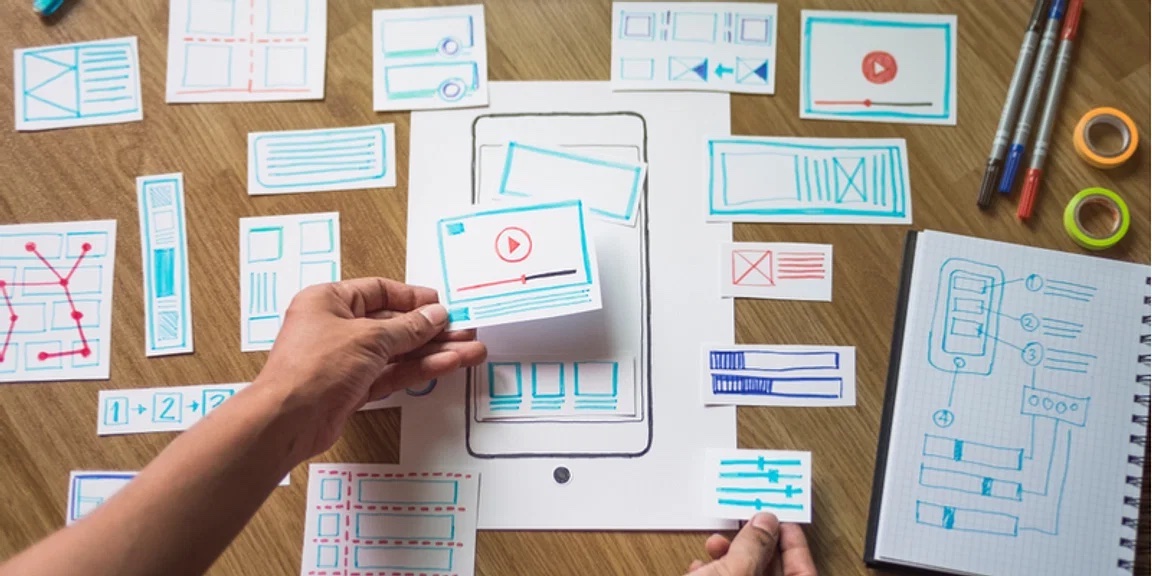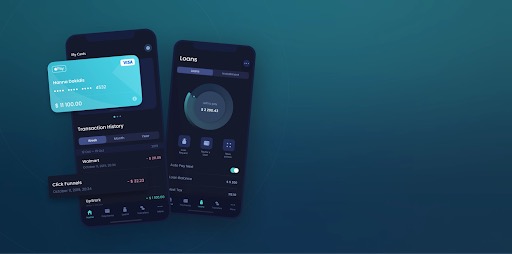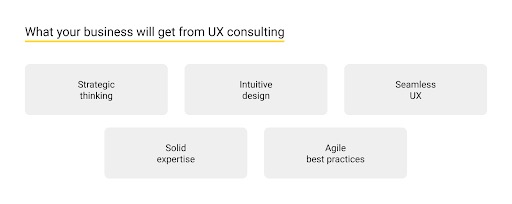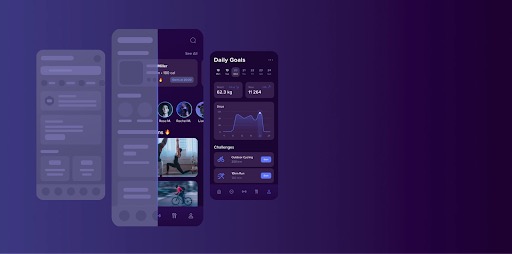
Profitability of investments in UX: how UX design affects project success
UX ROI: the meaning of UX design
Users want to achieve the ultimate goal as quickly as possible and with a small number of actions. According to statistics, 59% of customers leave the online store because of a negative user experience, even if they like the brand. Therefore, business is looking for ways to retain an audience, one of which is UX design. Let’s show by examples what is the return on investment in UX.

The recipe for a successful UX design
It depends on the UX design whether the user reaches the final goal (purchase) and returns to the site again.

There is no universal recipe for a good user experience. The success of UX largely depends on the combination of its “ingredients”:
- design (color, image, video, font, and so on);
- content (semantic content of digital pages);
- application structures (page hierarchy and sales funnel);
- preferences of the target audience (results of the UX design study).
It’s not an easy job, but the result is worth it. After all, if you hit the target, a well-designed application will increase sales, bring a decent profit, increase business productivity, attract more satisfied customers and advertise the brand.

That’s why companies should pay attention not only to the development of new technologies, but also to improving the user experience. For example, according to Apple CEO Tim Cook, the company’s entire product portfolio can fit on one table, while the digital leader not only creates new applications, but also improves old platforms.
How does UX design affect project success
The competition in the market is getting tougher, and the more convenient and pleasant the product is, the more users it will have. Data from the research organization Experience Matters illustrate that taking into account the interests and needs of customers stimulates their desire to bring money into the business, motivates them to recommend the brand to others and reduces the likelihood of leaving for competitors.

According to UX/UI design companies, every dollar spent on UX brings a return of $2 to $100. There are many vivid examples when changing a design has become the best business decision for an organization.
When Walmart improved the shopping cart design, it attracted 214% more customers and increased sales by 160%. Bank of America has increased the number of online banking registrations by 45% after rethinking the user interface. United Airlines has updated the website interface with personalization, after which 200% more travelers began to buy online tickets. In the six months after Samsung improved the user experience, its sales grew by 11%.
As can be seen from the above data, the value of UX design is great. This can significantly affect customer loyalty, sales and company profits. But how to measure this influence?
How to measure the profitability of investments in UX
Imagine, a UX/UI design company conducted a study, found out the opinion of users and worked on improving the application. The developers have implemented the theory into your software, and you have received an updated program. How to understand whether the changes have brought benefits and whether the investment is justified?

Indicator 1: Conversion rate.
If more users buy goods and services after the redesign of the application, it means that the UX design has benefited. But is this enough to cover the costs of the designer and developers? In fact, the situation is more complicated. It is necessary to take into account seasonality, marketing, initial and target conversion rates and other factors that simultaneously affect sales.
Indicator 2: Average revenue per user.
With the design change, the average revenue per user (ARPU) is also growing. It is calculated by dividing the revenue by the number of registered users. Accordingly, if ARPU increases with the same number of visitors, it may mean that customers have started buying more products.
As a rule, improved UX design motivates people to subscribe to the company’s services. It turns out that regular customers bring in more revenue because they like working with the application, and the obstacles that prevented them from using the product more often have been eliminated.
Indicator 3: Support costs.
If the number of support calls has decreased, it means that customers understand how to handle the product and achieve the final goal.
How to understand that UX has played in favor of business? Calculate the average cost of support by dividing service cost by the number of registered users. If the cost of supporting one client has decreased, it means that site navigation is simple and convenient to work with.
To achieve such savings, UX designers investigate the frequent questions that customers ask. If the users’ problems are resolved immediately after restarting the application, the investment in UX will pay off in the first months.
For example, optimization of the Media Markt application has shortened the customer’s path to purchase. It became easier and more convenient for people to work with self-service terminals, so they were 20% less likely to seek help from the service. As a result, online sales increased by 14% in the first six months, and the company saved on maintenance.
Indicator 4: User effectiveness.
The fact that the design of the application has changed may indicate how much faster users began to cope with their tasks.
Think about UX before software development
Research shows that correcting errors in a program that has entered the market costs tens and hundreds of times more than at the beginning of development.

If you include UI/UX specialists in the project team, they will conduct a study of UX design, identify user needs and tell you what potential customers look like, what functions they need, for which devices software should be optimized, and so on. All these nuances will be taken into account before creating the application so that the project can successfully enter the market, attract more users and immediately make a profit.
Of course, as the business develops and grows, it will be necessary to redesign the software more than once, taking into account current trends. The market is constantly changing, competition is growing, new services and projects are appearing in the company.
Conclusion
Do not underestimate the importance of UX design for business. The “magic” of UX is precisely to effectively build relationships with users and turn visitors into customers.
In an era when a positive customer experience becomes a competitive advantage, UX is an important part of a business strategy.
If you are looking for a good UX/UI specialist for your project or want to redo old software, feel free to contact the Andersen team. Our experts know the latest UX trends and user experience research methods. We have successfully implemented projects for Samsung, Media Markt and other large companies.







